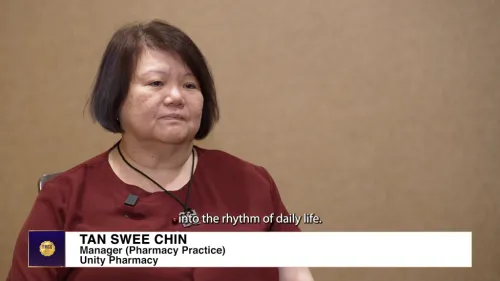Published:
Using meaningful innovation to improve cancer treatment
Article by Abhi Chakrabarti, Director, Global Marketing, Philips Radiation Oncology SystemsHow intelligent automation can reduce patients’ anxiety and create better radiation therapy plansOf all the intruders in a household, cancer is certainly considered one of the most frightening. That said, the management of cancer has improved tremendously over the last decade. Innovative technology helps with early diagnosis, and a range of treatment options, such as radiation therapy, increasingly target the disease and spare healthy tissue, improving the chances of a cure and a better quality of life for many patients worldwide. Yet more needs to be done, and we at Philips are busy making an impact in the fight against cancer on all fronts, from prevention to diagnosis to treatment and home care – something that we call ‘the health continuum.’ One area of focus is radiation therapy, which uses high-energy particles or waves to destroy or damage cancer cells. It is one of the most common treatments for cancer, either by itself or along with other forms of treatment, according to the American Cancer Society. This field has seen a lot of development in recent years, as sophisticated imaging and software has allowed the clinical team to create high quality treatment plans to hit the tumor and avoid healthy cells as much as possible. Treatment delivery devices, such as the Linear Accelerator or LINAC, can now deliver the radiation precisely in many ways, personalized to that individual, as determined by the treatment plan. The treatment itself, performed on an outpatient basis, takes several weeks, and the very fact that the use of radiotherapy is increasing suggests that this treatment technique is providing high quality results.Seeing the Cancer Journey Through a Patient’s EyesAt the outset, it seems that we’ve addressed all the problems and everything is fine. But that’s not the whole story. And this becomes evident when we see the journey through the eyes of a patient.There’s a lot of uncertainty, worrying and waiting involved for the first appointment with the oncologist. During this consultation, the oncologist will describe to the patient a typical treatment course and will try to allay their concerns. Following that, there’s often several days of waiting for the CT scan, also known as a simulation scan. The images of this CT scan, along with other images acquired from MR or PET/CT scanners during diagnosis, will then be used to create an individualized treatment plan. The planning process is time-consuming, often taking several days; labor-intensive because of the significant amount of manual work involved; and generates treatment plans, the quality of which are heavily dependent on the skill of the planner. The treatment plan plays a big role in determining the quality of the treatment itself. For most patients, this means waiting for a week, or more, after their simulation scan to start their treatment, increasing their anxiety and, in many cases, adversely affecting their health further through lack of appetite or sleep. In some instances, the patient might be forced to travel long distances to a specialized cancer center for their four- to six-week treatment, incurring more delays and more costs.Our aim at Philips is to change this paradigm. Meaningful Innovation to Improve Cancer TreatmentClearly, there’s no way to remove all of the anxiety that comes with the word ‘cancer.’ But we are committed to reducing it wherever we can through meaningful innovation. We are introducing intelligent automation in all our imaging devices and treatment planning software to make the process much less labor-intensive, so all the work can be done quicker and less operator-dependent, meaning the quality of the treatment plan will be less dependent solely on the skill of the planner. By removing much of the repetitive work and offering high quality plans, these systems will now enable the highly skilled staff in a radiation therapy department to focus on key tasks that really require their undivided attention. Furthermore, we are integrating much of the functionality between these devices to make the whole process simpler and faster from start to finish. It is easy to see how this has the potential to increase the efficiency of a busy department and give them the tools to improve their quality of treatments. But what about patients and their families? Will they be affected by this change in paradigm? Absolutely. Reducing the time between simulation and start of treatment has huge implications for the patients and their families. Consider the scenario where patients no longer just go home and wait for a week after their simulation scan. Instead, almost immediately after they’ve had the simulation scan they could see their oncologist who would review with them their own personalized treatment plan. Moreover, they might not have to wait an entire week to get their treatment started. This could start within a day or two after the simulation scan – possibly even the same day! In many instances, they might no longer be forced to travel long distances for their treatment because their local cancer center has the technology to offer them world-class treatments. These are not minor changes for the patient. They make a world of difference to their well-being. And all this can be enabled through intelligent automation and integration of devices, something we’re committed to in Philips. Now that is meaningful innovation.Learn more about Philips’ radiation oncology solutions.About Abhi Chakrabarti: Abhi Chakrabarti is the Director of Marketing at Philips Radiation Oncology Systems. He has been involved in various functions, from service to applications to sales and marketing, within the radiotherapy industry over the last 20 years. He holds a masters and doctorate in electrical and electronic engineering.

















 Advertise
Advertise






